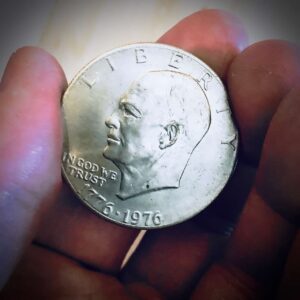 The global stablecoins markets recently surpassed the $11 billion mark. Many blockchain and crypto firms are beginning to realize the potential of stablecoins in facilitating many different types of transactions including cross-border or remittance payments.
The global stablecoins markets recently surpassed the $11 billion mark. Many blockchain and crypto firms are beginning to realize the potential of stablecoins in facilitating many different types of transactions including cross-border or remittance payments.
Tether (USDT), the blockchain-powered platform that powers the world’s largest stablecoin by market cap, and Compound, a decentralized lending market, are key players in the emerging decentralized finance (DeFi) ecosystem. This, as USDT volume on Compound has surged above $100 million.
As noted in a release shared with CI:
“USDT has grown faster than all rival offerings on the Compound protocol… Some of the USDT investors indirectly interact with the Compound protocol, which focuses on establishing money markets that are a pool of assets with algorithmically derived interest rates.”
Calvin Liu. strategy lead at Compound, argues:
“Tether is an extremely useful asset in the Compound ecosystem … [it’s] one of the most liquid markets in the Compound protocol and accordingly across all of DeFi.”
Liu claims:
“Compound and its peers are driving a nascent alternative financial system that is disintermediating the need for banks and trusted, centralized third parties.”
Paolo Ardoino, CTO at Tether, noted:
“Tether is becoming the reserve currency of DeFi.”
Compound’s native COMP token recently began trading on non-custodial exchange Uniswap.
In addition to USDT’s Ethereum-based version, there are versions of USDT issued on several other DLT platforms including Algorand, EOS, Liquid Network, Omni and Tron. USDT has grown to a market cap of nearly $10 billion, which is significantly more than any other stablecoin in the market.
Certain stablecoins are now backed by commodities such as gold.
As explained by the Delta Exchange team, stablecoins maintain the peg to fiat currencies through one of the following methods:
- fiat-collateralization,
- crypto-collateralization, or
- algorithmic supply management.
A Delta Exchange report shared with Crowdfund Insider notes:
“Among these, collateralised stablecoins, like USDT, currently dominate the space. In May 2020, the total aggregate supply of stablecoins surpassed $11 billion, from $4 billion in June 2019, as testament to the growing popularity of these assets.”
The report adds:
“Fiat-collateralized stablecoins in many aspects are quite similar to CBDCs. Stablecoins have (and CBDCs can) made (make) the transfer of funds between two parties across different locations cheap, efficient, and transparent. In contrast, traditional traditional cross-border payments are slow, expensive and exceptionally opaque.”
The researchers at Delta argue that reserve banks are likely to exert “tight control over CBDCs.” Their management of CBDCs (interest rates, supply etc) will be “driven by the central banks’ macroeconomic objectives,” the Delta Exchange team notes.
They claim:
“In contrast, stablecoins are purely supply-demand driven and are widely accessible to people around the world. They also represent a highly flexible and accessible alternative to a USD bank account for traders around the world for whom this may be extremely difficult to obtain.”
According to the Delta team, the market-driven nature of stablecoins should give them a decisive edge over CBDCs. But since stablecoins may compete directly with CBDCs, reserve banks might feel “threatened by them and make it difficult to issue stablecoins,” the researchers at Delta Exchange noted.
They add that stablecoins could potentially lead to a “societal shift from credit money to commodity money” via the adoption of commodity-collateralized stablecoins.
They explain:
“While central banks and credit money is based around a system of liabilities, commodity money, like gold, doesn’t serve a monetary function. Commodity-collateralized stablecoins can change that and lead to the revival of commodity money.”
Last month, Tether and Aave Protocol, an open-source and non-custodial money market protocol, reported a significant increase in demand for Tether (USDT).
They claim that the surge in demand for USDT may be attributed to the growing interest in decentralized finance (DeFi) applications and platforms.
Notably, Tether and its sister company Bitfinex, a major digital asset exchange, were subpoenaed by the US Commodity Futures Trading Commission (CFTC) back in December 2017.
A document posted on Tether’s official website at that time revealed that it had about $443 million in its company bank accounts as of September 15, 2018.
At the time of the audit, which was performed by Friedman LLP, Tether’s USDT tokens in circulation had been valued at $420 million that day. However, Tether was not able to verify whether it actually held the $2.3 billion in deposits in order to fully back the USDT it had issued at that time.
Later on, Tether said that its USDT wasn’t fully backed by US dollar reserves. Instead, the stablecoin was about 70% backed with USD reserves and the remaining was backed by “cash equivalents,” the company had claimed.
Throughout the years, Tether and Bitfinex appear to have experienced significant problems with how they manage their business operations.

